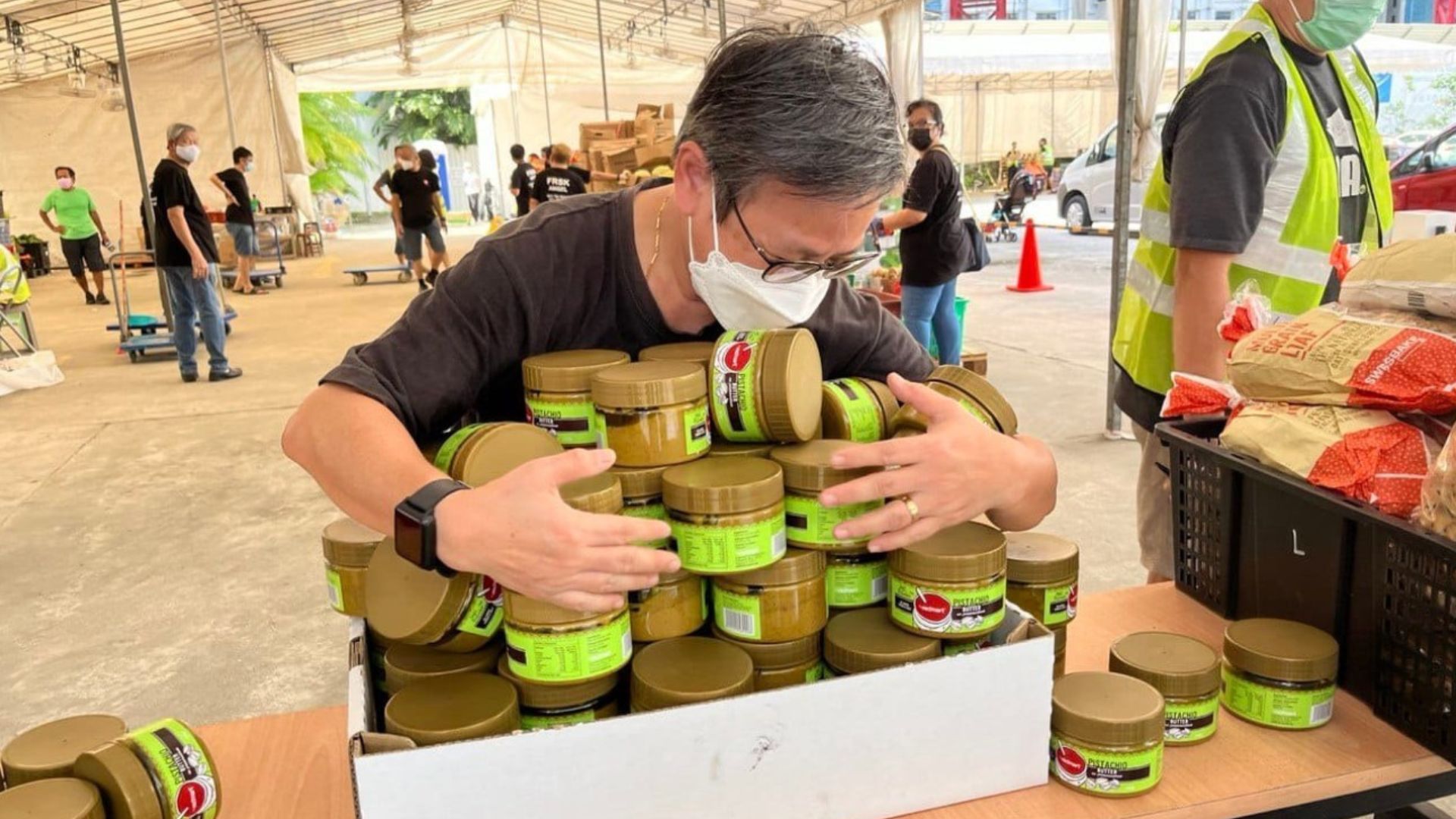Whose responsibility when it comes to food wastage in Singapore? For a group of residents in Sengkang, it is a duty they are proud to shoulder through food rescue.
Co-founder of Food Rescue Sengkang (FRSK) Derek Ong estimates that on a given Saturday, a main distribution day for the group, there are about 20 to 30 tonnes of rescued food that are being distributed across the island. These “rescued” foods are not the ones you see stocked at your local supermarket, but the ones that do not even make it to the shelves.
“There are many reasons why suppliers give us these foods. Some are rejected due to cosmetic reasons, where defects like blemishes or bruising make sellers reject the product from their suppliers. Others are discarded because of overstocking and ‘best before’ dates, where inventory space is needed for other products. Some are charitable donations from organisations,” says Mr Ong, who is also a chartered accountant.
That is where food rescuers like Mr Ong and his wife Janet Lee, step in to prevent it from going straight to the bin. FRSK receives donations from suppliers and rescue efforts every Saturday, of which Mr Ong estimates that his organisation distributes about 20 to 30 tonnes to feed about 11,000 persons every week. The rest are redistributed to other distribution groups in Singapore, each serving a local community and target of people.
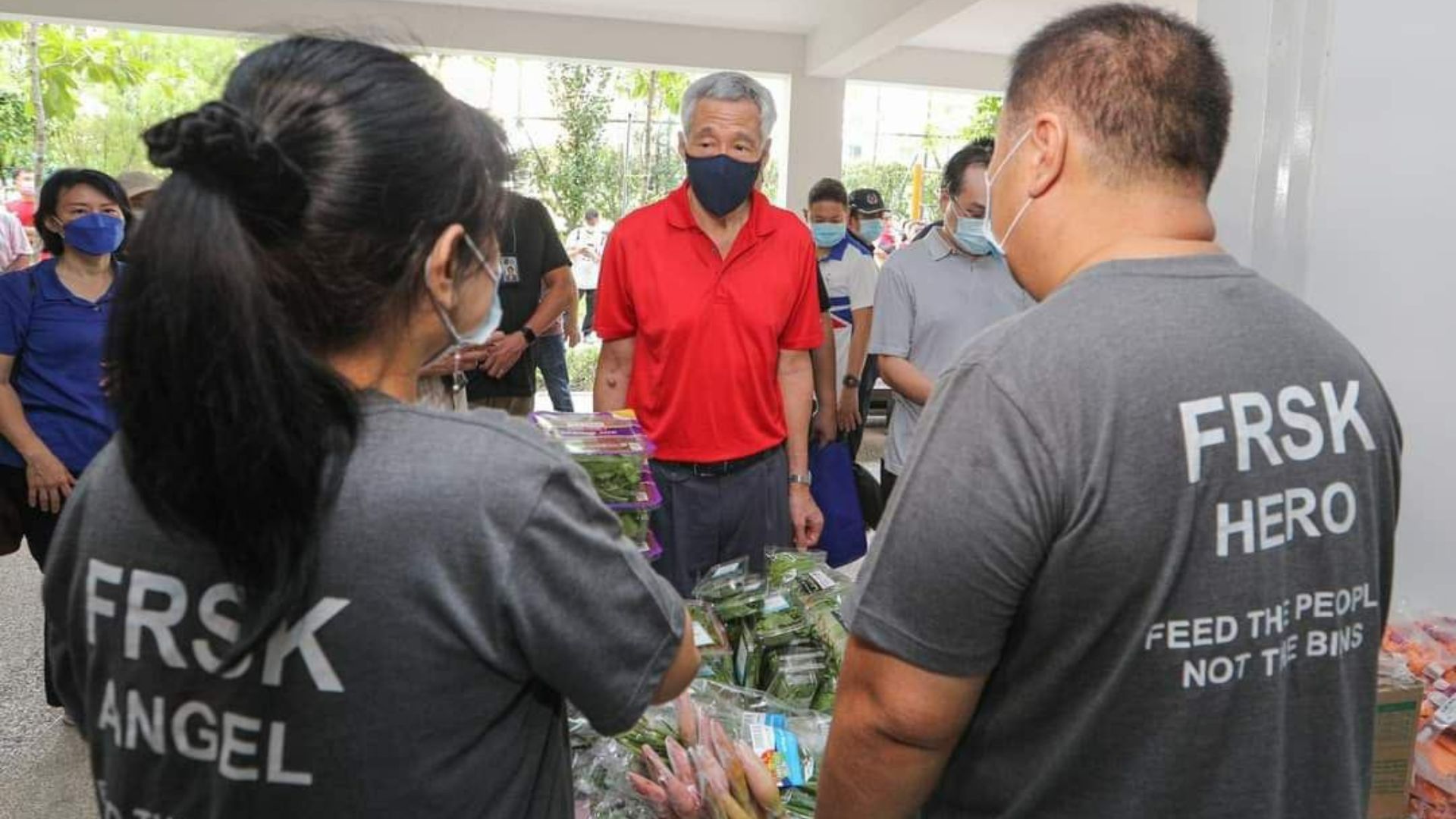
According to the National Environment Agency (NEA), food waste accounts for about 12 per cent of the total waste generated in Singapore. And as economic activities picked up in 2021, waste generated increased to 817,000 tonnes, which was 23 per cent more than the 665,000 tonnes generated in 2020.
A 2019 report on the environmental impact of food in Singapore by researchers Deloitte and A*STAR SIMTech, estimates that 367 kilograms of food is consumed per person per annum in Singapore, consisting of 46 per cent fruits and vegetables. 25 per cent grains and 29 per cent meats, eggs and seafood.
“There’s a blur line between ‘expired’ and ‘best before’. We are trying to tell people that even though foods are expired or after the best before dates, they are still safe to eat. For example rice weevils, in my grandparents’ time, we just washed the rice for the weevils to float up, get rid of them, and the rice is still fit for consumption. Nowadays, so much food goes to waste because of this. It’s a big waste and education plays a key role,” says Mr Ong.
Everyday heroes to the food rescue
Founded in 2019 by the Ongs, FRSK is a nonprofit to raise awareness on food wastage and to provide support to the “sandwich” class in Singapore.
“Since we started three years ago, our mission has been to reduce food wastage and provide it to the ‘sandwich’ class. We are in no position to qualify anyone, but if people are willing to come forward we can help them. We also welcome anyone who believes in reducing food wastage. The last thing we want is for people to take this food and throw it away,” says Ms Lee.
“The amount of food we give can last a family of three to five for about one week. So if you come every week, you can save about $250 a month. When newcomers come and see that the food we distribute is still edible, they feel it’s a win-win situation for everybody. We save both the environment and on grocery bills,” says Mr Ong.
Ms Lee says food rescue involves many ad-hoc tasks, which the couple juggles with their full-time jobs. A 16-pallet donation came in on a non-distribution day but she managed to get them to several nursing homes.
Mr Ong says that an ongoing challenge of FRSK is to find volunteers who are willing to endure physical labour to work with food produce.
“We once had a batch of zealous Singapore Management University (SMU) students who wanted to dive into dumpsters at a wholesale centre in Pasir Panjang, to salvage some edible strawberries. I’m grateful for their zeal but I had to remind them to be safe,” Ms Lee adds.
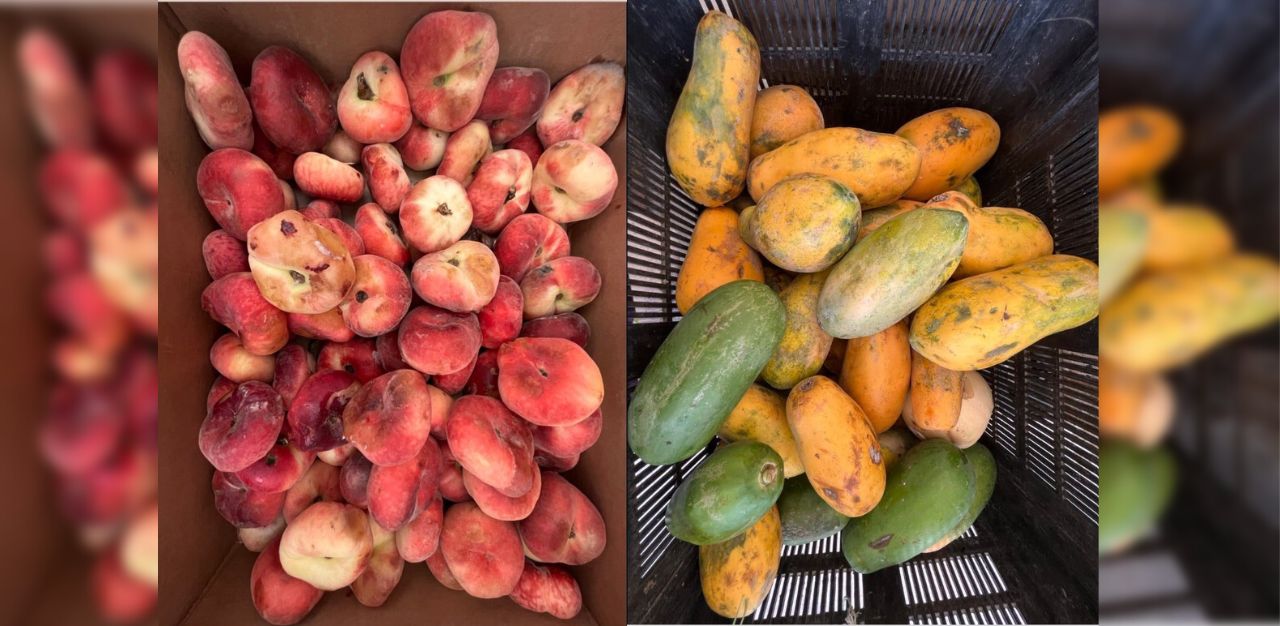
Shipping consultant Nitin, a volunteer who wants to be identified only by his first name, is full of praise for what the couple behind FRSK is doing.
“I live in the area so I see the efforts required to organise this. The lights are on from eight in the morning to eight at night sometimes. I make the time to come here to help and my colleagues try not to involve me on Saturdays. I volunteer for about two hours but what we do is nothing compared to them,” says the 39 year-old.
Mr Nitin says the service that FRSK provides is more important now because of inflation and food insecurity.
“With inflation, it’s not only the less fortunate who are turning up, people who can afford to drive come here as well. It’s a hit to a lot of people,” he says
Singapore has not been exempted from the impact of global inflations. Japanese financiers Nomura estimated the food inflation in Singapore to double to 8.2 per cent in the second half of 2022.
Food security and diversity were also topics raised in July’s parliament hearing amid chicken shortages and international conflicts. Observers noticed the rise in demand for rescued foods during these situations.
Full time nurse and resident of Sengkang Norley, 49, has been volunteering with FRSK for three years and fully understands the value of food.
“I have seven children so we understand the importance of food wastage. It’s something that I instil into my household. I signed up with FRSK after hearing about them,” says Ms Norley, who works night-shifts at a private hospital.
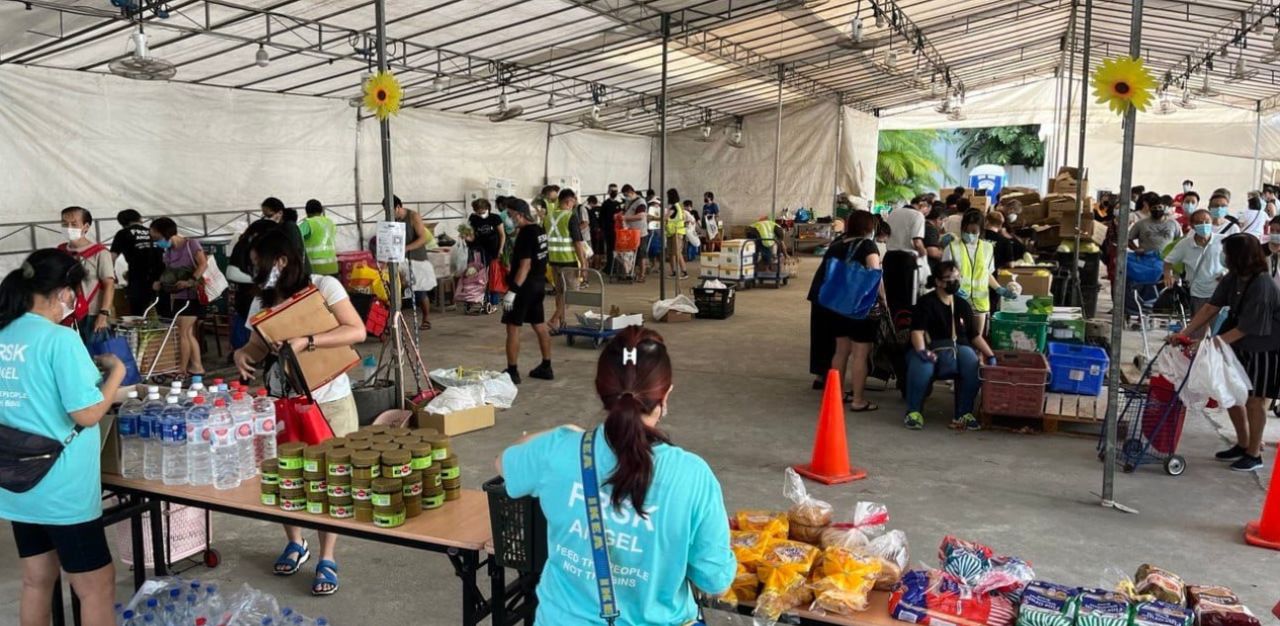
Supplier struggles
While Mr Ong feels more can be done in the supply chain to reduce food wastage, he understands the struggles of suppliers and the importance of trust between parties. He attributes the increased awareness of food wastage to more suppliers coming onboard.
“I think there are still donors who are very wary about donating food because they are afraid of liability. I think the authorities need to come in and look at how other countries are handling this, like the US for instance. How do you absolve the giver from liability? Some suppliers of bread products would rather throw their excess foods away. There have been instances in the past where suppliers donated food to ‘rescue organisers’ who took off with the food, I believe the authorities are already looking at this. We have the Good Samaritan Law which helps, but it would be helpful if this area was made clearer,” he says.
“When we first started in 2019, there were very few suppliers. We had to go door to door in Pasir Panjang to ask for excess food. In this line of volunteering you must establish a relationship with suppliers. Whenever they have things they want to give out, you must be there to support them. It’s a two-way street that they give us their load, we must be able to absorb the volume, then you establish a regular relationship,” Mr Ong adds.
He also describes that his group collects a two-dollar donation to help with costs that he funds out-of-pocket and to combat against opportunistic behaviour.
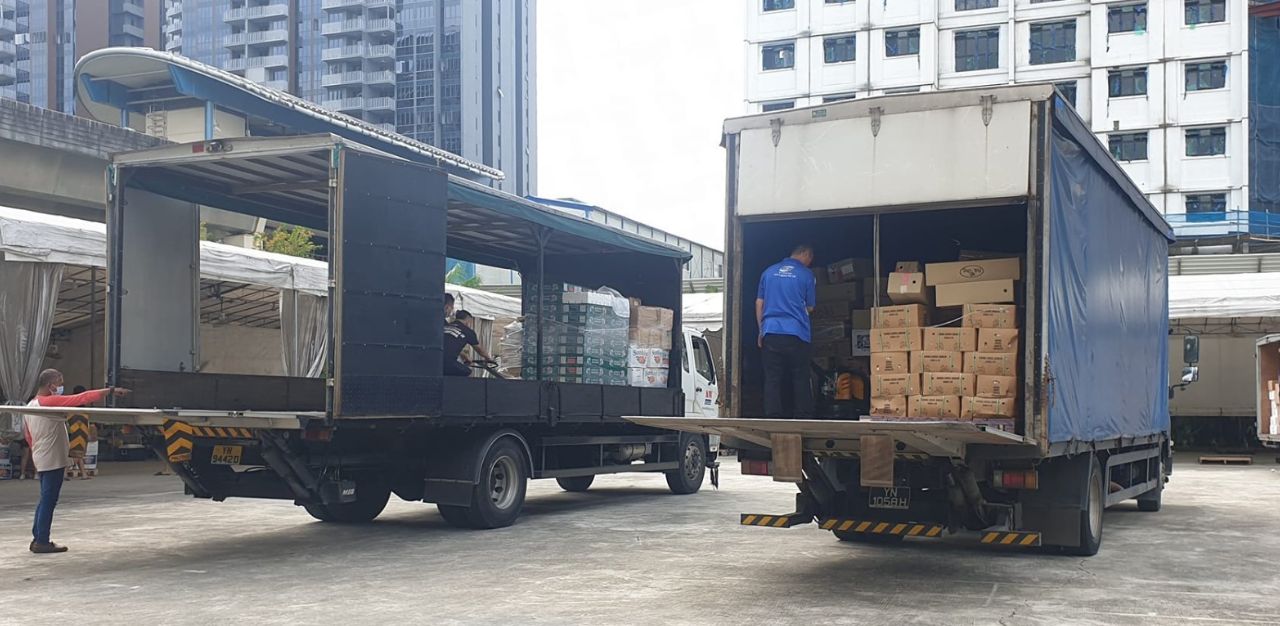
“In the past when we didn’t set an amount for donations, some people would drop in 10 cents as a token and frankly I felt quite insulted. The cost savings which we distribute is far greater than our two-dollar token amount. Moreover, we’re trying to educate the community on food wastage and make them feel involved in what we are doing. When you ask people to pay for something, they are more serious about it,” he says.
Mr Ong describes his distribution as a “standing offer” rather than an “invitation to treat”.
Reviving the kampung spirit in Sengkang
Retired teacher Cecilia Tan, 73, was eager to volunteer with FRSK but could not due to physical constraints. She supports the initiative by spreading the word and attending their distributions.
“I was very surprised that all these salvaged foods can be eaten. It’s so fantastic to think that these foods would have been destined for the bin if not for this. I recommended my sister and my friends to come as well, and they reacted similarly,” she says.
Ms Tan says the distribution has helped her save on her shopping expenditure and encouraged her to learn new ways to expand the life of the rescued foods.
“For foods that are yellowing, I’ll cook it straight away in a stir-fry or soup. You can extend its shelf life by three to four days if you store it properly in the fridge. I share the portions with my neighbours so nothing gets thrown away,” she adds.
Another retiree Catherine Yeo, 71, who used to be a corporate treasurer, says she has adapted her cooking and eating patterns to accommodate the food that FRSK rescued. She adds that her haul of cabbage goes into a stir-fry with mushrooms and pork trotters.
“There’s a wide variety of fruits and vegetables at times. We’re here because we don’t want to waste food,” she says.
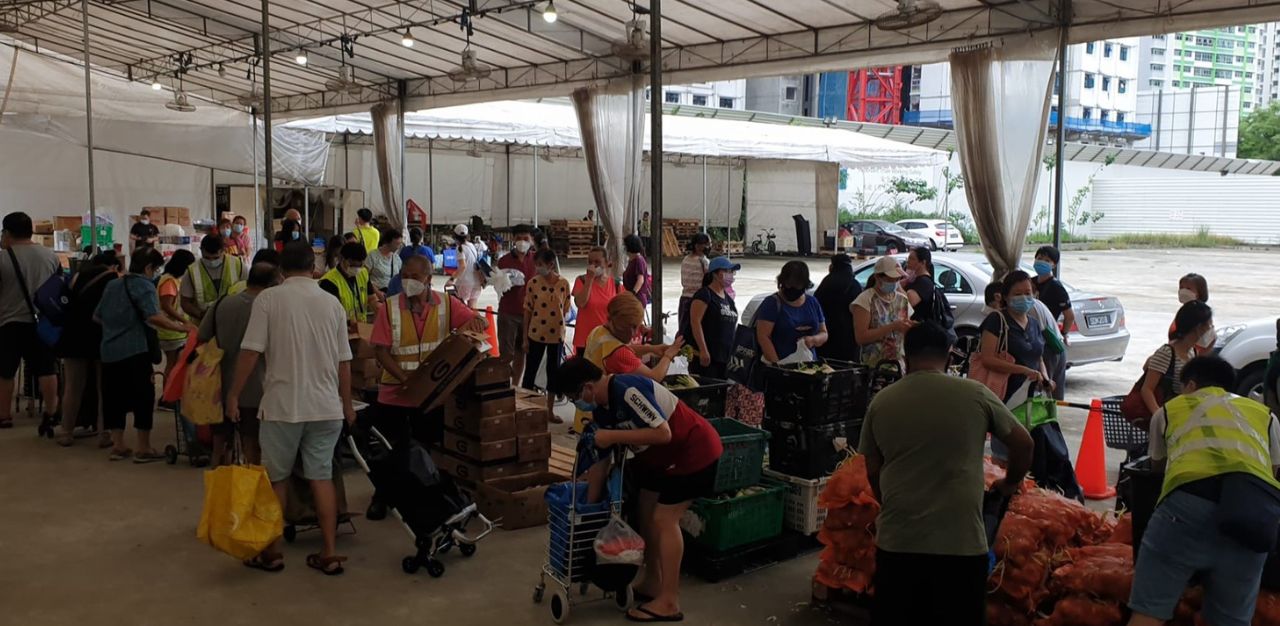
Ms Jennifer Loh, a 42 year-old who works in the banking industry, is a first time visitor to the food rescue in Sengkang.
“I heard about this food rescue from a colleague, who comes every Saturday, and it piqued my interest to come and see more. I feel that it’s a good initiative to help reduce food wastage. The food is still in good condition so why let it go to waste?” she says.
Ms Loh brought her 12 year-old son Aiden along.
“I’ve read in articles that people in supermarkets buy food that is visually appealing. Maybe because ‘ugly’ foods might reflect badly on you, especially if you have guests over. I have no qualms about eating foods that’s a bit yellow or bruised but still safe. There are other people without enough food so we should cherish what we have,” he says.
While the couple behind FRSK is glad that the topics like inflation and food security have brought awareness to their volunteer work, they hope this awareness will result in a sustainable interest in food wastage and community life.
“We have a main telegram channel with about 4,000 subscribers where we disseminate information for our distributions. We also run and manage different telegram channels like our recipe and our freecycle channels. We actually share how they use the rescued food, how they salvage, prepare, store, and cook it. This is very useful information we want people to share,” says Ms Lee.
She also says that FRSK tries to work closely with schools to educate students on food wastage. They give talks in primary and secondary schools and organise donation drives for expiring food.
Mr Ong says that the most important part of FRSK’s work goes beyond just rescuing and redistributing the food, but in mobilising his community to enact change.
“We have a group of like-minded volunteers who also believe in reducing food wastage. But don’t just see us as a place where we distribute food, free-of-charge, and reduce food wastage. It goes beyond that, we’re fostering the kampung spirit and educating future generations that this is a serious problem,” he says.
Mr Ong adds: “I think as citizens, we shouldn’t wait for the government to tell us what to do, we should take the lead and do it ourselves.”
RELATED: Yeo Pei Shan: Breaking the cycle of food waste from UglyFood to Ugly Duck
Join the conversations on TheHomeGround Asia’s Facebook and Instagram, and get the latest updates via Telegram.

